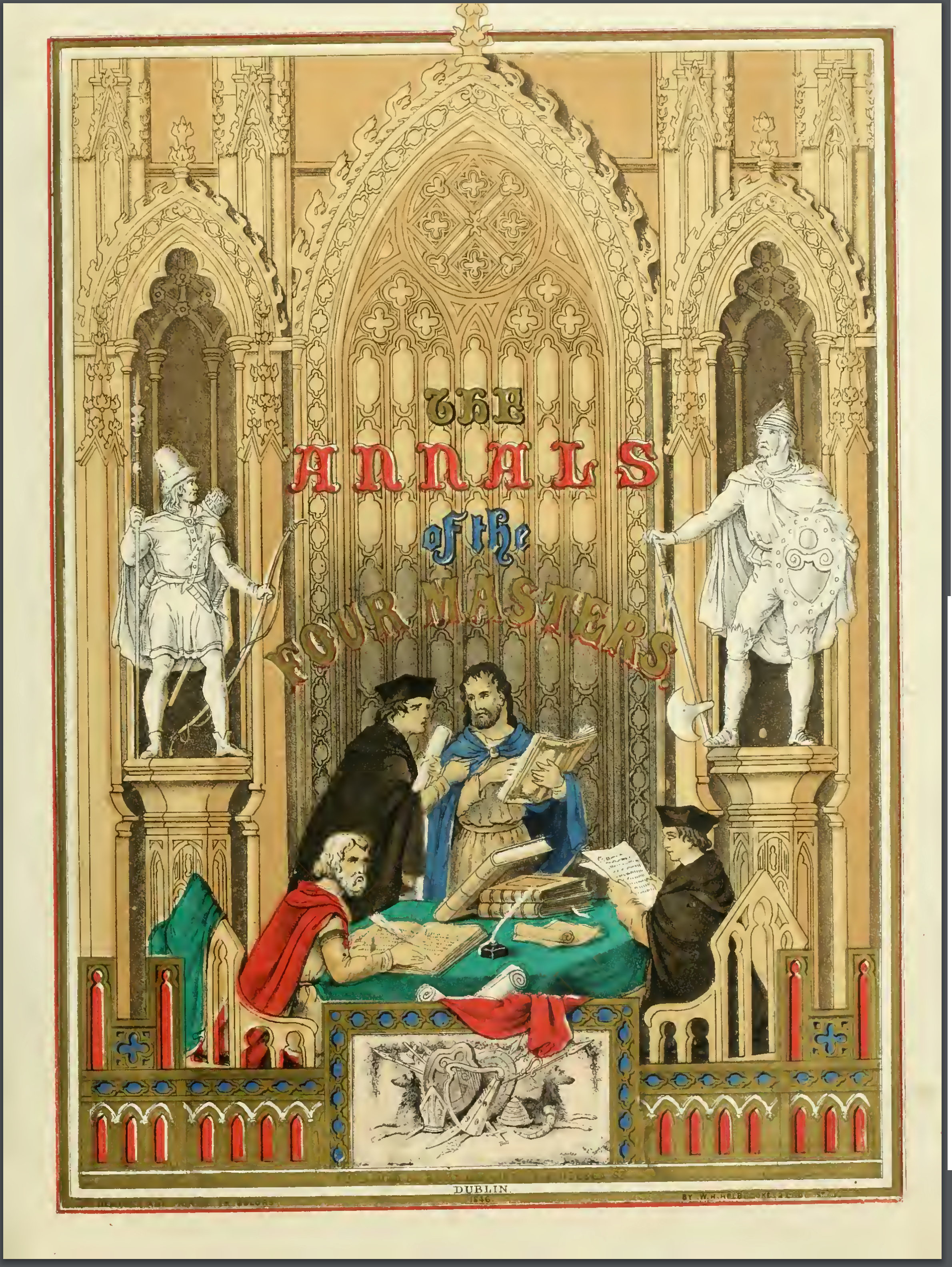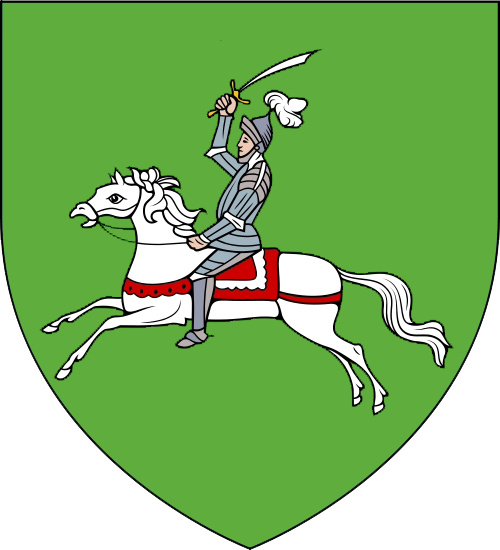|
King Of Fir Manach
Throughout the 11th and 12th centuries the Kings of Fermanagh (Fhear Manach or Fear Manach in Irish) O'hEignigh, O'Maolruanaidh and O'Dubhdara were drawn from the Kingdom of Airghialla, Other names include Oirghiall, Oriel, Airgéill and Uriel. The oldest and more correct form is Airghialla denoting both the territory and the inhabitants of the territory. This is stated in the early genealogies to go back to one of the Three Collas. The Ó hEignigh and Maolruanaidh septs were noted as kings of Fermanagh until becoming tributary to the Maguires (Meicc h-Uidir) around 1202. Kings of Fermanagh The ''Annals of the Four Masters'' mention the following as Kings of Fermanagh. *Cathal Ó Dubhdara (died 1009) *Niall Ó hÉicnigh (died 1053) *Domhnall Ó Mael Ruanaidh (died 1057) *Giolla Críst Ó Dubhdara (died 1076) *Ó hÉicnigh (died 1095) *Laidhgnén Ó Dubhdara (died 1118) *Ó Mael Ruanaidh (1126) *Gilla Críost Ó hÉicnigh (died 1127), also over-king of Airgíalla. *Faelán Ó Dubhdara ... [...More Info...] [...Related Items...] OR: [Wikipedia] [Google] [Baidu] |
Fermanagh
Historically, Fermanagh (), as opposed to the modern County Fermanagh, was a kingdom of Gaelic Ireland, associated geographically with present-day County Fermanagh. ''Fir Manach'' originally referred to a distinct kin group of alleged Laigin origins. The kingdom of Fermanagh was formed in the 10th century, out of the larger kingdom of Uí Chremthainn, which was part of the overkingdom of Airgíalla.MacCotter, Paul. ''Medieval Ireland: territorial, political and economic divisions''. Four Courts Press, 2008, p.243 By the late 11th century it had grown to cover all of what is now County Fermanagh. The kingdom came to be ruled by the Mag Uidhir (Maguire) clan from the late 13th century onward. They were based at Lisnaskea, and their royal inauguration site was nearby Sgiath Gabhra (Skeagoura), now called Cornashee. Under Hugh Maguire, Fermanagh was involved in the Nine Years' War against English rule. His successor, Cú Chonnacht Óg Mag Uidhir, was one of the Gaelic Irish lead ... [...More Info...] [...Related Items...] OR: [Wikipedia] [Google] [Baidu] |
Three Collas
The Three Collas (Modern Irish: ''Trí Cholla'') were, according to medieval Irish legend and historical tradition, the fourth-century sons of Eochaid Doimlén, son of Cairbre Lifechair. Their names were: Cairell Colla Uais; Muiredach Colla Fo Chrí (also spelt Colla da Chrioch, or Fochrich); and Áed Colla Menn. Colla Uais ruled as High King of Ireland for four years. Recent DNA analysis confirms the history of the Three Collas in fourth-century Ireland, but questions their descent from Eochaid Doimlén and Cairbre Lifechair. Legend According to tradition, the Three Collas killed their uncle, Fíacha Sroiptine, at the Battle of Dubhchomar, in Crioch Rois, Breagh, with Colla Uais taking the kingship. It was prophesied that whoever killed them, his descendants would never rule Ireland. Colla Uais ruled in Fíacha's place for three years (323-326 AD), and as High-King of Ireland for four years, until Fiacha's son Muiredach Tirech banished the Three Collas, exiling them and three ... [...More Info...] [...Related Items...] OR: [Wikipedia] [Google] [Baidu] |
Sept (social)
A sept () is a division of a family, especially of a Scottish or Irish family. The term is used both in Scotland and in Ireland, where it may be translated as Irish , meaning "progeny" or "seed", and may indicate the descendants of a person (for example, , "the descendant of Brian MacDermott"). The word may derive from the Latin , meaning "enclosure" or "fold", or via an alteration of the English-language word "sect". Family branches ''Síol'' is a Gaelic word meaning "progeny" or "seed" that is used in the context of a family or clan with members who bear the same surname and inhabited the same territory,"Septs of Ireland" Irish Septs Association. as a manner of distinguishing one group from another; a family called ''Mac an Bháird'' ( |
1202 In Ireland
1 (one, unit, unity) is a number, numeral, and glyph. It is the first and smallest positive integer of the infinite sequence of natural numbers. This fundamental property has led to its unique uses in other fields, ranging from science to sports, where it commonly denotes the first, leading, or top thing in a group. 1 is the unit of counting or measurement, a determiner for singular nouns, and a gender-neutral pronoun. Historically, the representation of 1 evolved from ancient Sumerian and Babylonian symbols to the modern Arabic numeral. In mathematics, 1 is the multiplicative identity, meaning that any number multiplied by 1 equals the same number. 1 is by convention not considered a prime number. In digital technology, 1 represents the "on" state in binary code, the foundation of computing. Philosophically, 1 symbolizes the ultimate reality or source of existence in various traditions. In mathematics The number 1 is the first natural number after 0. Each natural number, ... [...More Info...] [...Related Items...] OR: [Wikipedia] [Google] [Baidu] |
Annals Of The Four Masters
The ''Annals of the Kingdom of Ireland'' () or the ''Annals of the Four Masters'' () are chronicles of Middle Ages, medieval Irish history. The entries span from the Genesis flood narrative, Deluge, dated as 2,242 Anno Mundi, years after creation to AD 1616. Publication delay Due to the criticisms by 17th-century Irish historian Tuileagna Ó Maol Chonaire, the text was not published in the lifetimes of any of the participants. Text The annals are mainly a compilation of earlier annals, although there is some original work. They were compiled between 1632 and 1636, allegedly in a cottage beside the ruins of Donegal Abbey, just outside Donegal (town), Donegal Town. At this time, however, the Franciscans had a house of refuge by the River Drowes in County Leitrim, just outside Ballyshannon, and it was here, according to others, that the ''Annals'' were compiled. [...More Info...] [...Related Items...] OR: [Wikipedia] [Google] [Baidu] |
Airgíalla
Airgíalla (; Modern Irish: Oirialla, English: Oriel, Latin: ''Ergallia'') was a medieval Irish over-kingdom and the collective name for the confederation of tribes that formed it. The confederation consisted of nine minor kingdoms, all independent of each other but paying nominal suzerainty to an overking, usually from the most powerful dynasty. Airgíalla at its peak roughly matched the modern dioceses of Armagh and Clogher, spanning parts of counties Armagh, Monaghan, Louth, Fermanagh, Tyrone and Londonderry. Its main towns were Armagh and Clogher. The name's usage survives as a cultural area of folk tradition in South East Ulster and adjoining areas of County Louth. According to legend, Airgíalla was founded by the Three Collas, who are said to have conquered what is now central Ulster from the Ulaid. The decisive victory was the battle of Achadh Leithdheirg, said to have been fought around the year 331. However, this tale is thought to be mostly fiction, and the a ... [...More Info...] [...Related Items...] OR: [Wikipedia] [Google] [Baidu] |
Tyrconnell
Tyrconnell (), also spelled Tirconnell and Tirconaill, was a kingdom of Gaelic Ireland. It is associated geographically with present-day County Donegal, which was officially named ''County Tirconaill'' between 1922 and 1927. At times it also included parts of County Fermanagh, County Sligo, County Leitrim, County Tyrone and County Londonderry at its greatest extent. The kingdom represented the core homeland of the Cenél Conaill people of the Northern Uí Néill and although they ruled, there were smaller groups of other Gaels in the area. From the 5th century founding of Cenél Conaill, the '' tuatha'' was a sub-unit of the larger kingdom of Ailech, along with their Cenél nEógain cousins, fellow descendants of Niall of the Nine Hostages. Their initial ascent had coincided with the decline of the Ulaid, whose kingdom of Ulster receded to the north-east coast. In the 12th century the kingdom of Ailech split into two sovereign territories and Cenél Conaill became Tír Chonai ... [...More Info...] [...Related Items...] OR: [Wikipedia] [Google] [Baidu] |
Hugh Maguire (Lord Of Fermanagh)
Hugh Maguire (; before 1570 – 1 March Old_Style_and_New_Style_dates.html" ;"title="nowiki/> N.S. 11 March1600) was an Irish nobleman and military commander who served in the Nine Years' War (Ireland)">Nine Years' War. As Maguire clan and Lord of Fermanagh">Maguire_family.html" ;"title="Chief of the Name">chief of the Maguire family">Maguire clan and Lord of Fermanagh, he was the first of the Gaelic chiefs to openly rebel against Elizabeth I's Tudor conquest of Ireland, conquest of Ireland and a founding member of the Irish confederacy. In early 1593, the appointment of an English Sheriff of Fermanagh led to Maguire making the first strikes against the Crown's governance in Ireland. The subsequent conflicts, which included the Battle of Belleek and the Battle of the Ford of the Biscuits, were among the first of the Nine Years' War. Maguire held command at the Battle of the Yellow Ford, which resulted in a crucial victory for the Irish confederacy. In 1600, he was shot and k ... [...More Info...] [...Related Items...] OR: [Wikipedia] [Google] [Baidu] |


